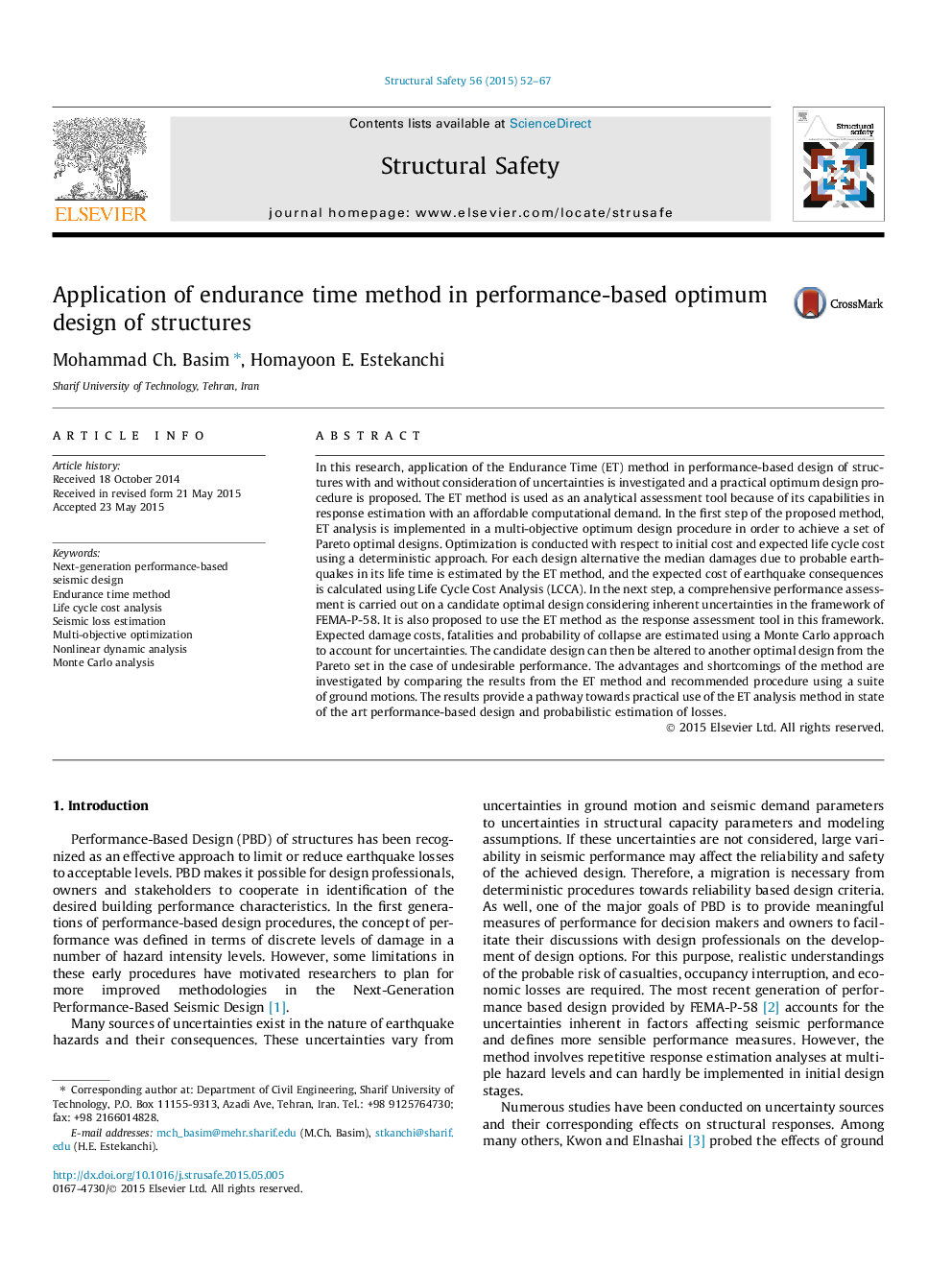| Article ID | Journal | Published Year | Pages | File Type |
|---|---|---|---|---|
| 6774225 | Structural Safety | 2015 | 16 Pages |
Abstract
In this research, application of the Endurance Time (ET) method in performance-based design of structures with and without consideration of uncertainties is investigated and a practical optimum design procedure is proposed. The ET method is used as an analytical assessment tool because of its capabilities in response estimation with an affordable computational demand. In the first step of the proposed method, ET analysis is implemented in a multi-objective optimum design procedure in order to achieve a set of Pareto optimal designs. Optimization is conducted with respect to initial cost and expected life cycle cost using a deterministic approach. For each design alternative the median damages due to probable earthquakes in its life time is estimated by the ET method, and the expected cost of earthquake consequences is calculated using Life Cycle Cost Analysis (LCCA). In the next step, a comprehensive performance assessment is carried out on a candidate optimal design considering inherent uncertainties in the framework of FEMA-P-58. It is also proposed to use the ET method as the response assessment tool in this framework. Expected damage costs, fatalities and probability of collapse are estimated using a Monte Carlo approach to account for uncertainties. The candidate design can then be altered to another optimal design from the Pareto set in the case of undesirable performance. The advantages and shortcomings of the method are investigated by comparing the results from the ET method and recommended procedure using a suite of ground motions. The results provide a pathway towards practical use of the ET analysis method in state of the art performance-based design and probabilistic estimation of losses.
Keywords
Related Topics
Physical Sciences and Engineering
Engineering
Civil and Structural Engineering
Authors
Mohammad Ch. Basim, Homayoon E. Estekanchi,
